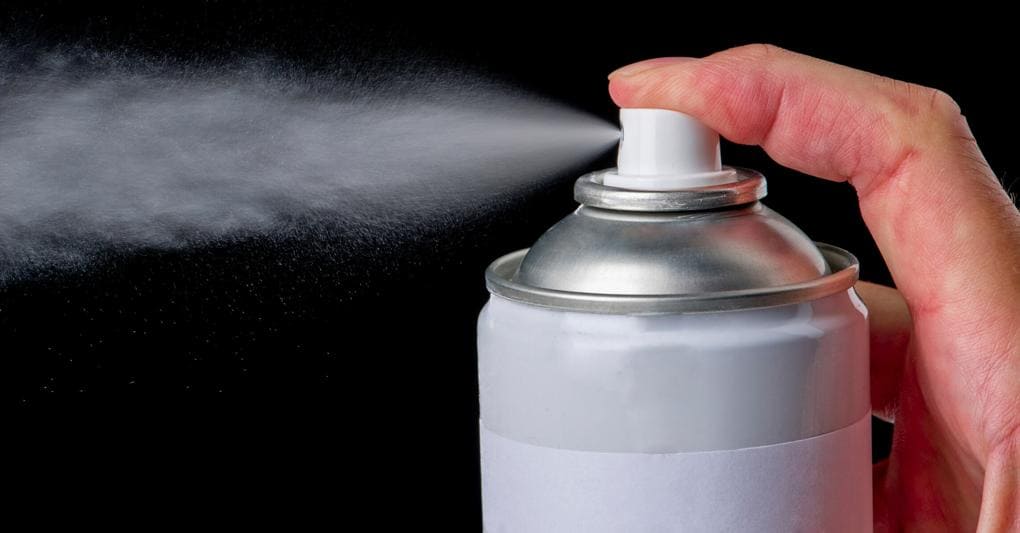Aerosol cans have become an ubiquitous part of our lives, used for everything from deodorant to paint. However, this convenient spray technology is not without its critics and controversies.
What is an Aerosol Can?
The basic design of an aerosol can was invented in the late 1930s and patents were filed in the 1940s. At its core, an aerosol can is a sealed metal can containing a liquid mixture and a propellant under pressure. The liquid contents and propellant are separated by a valve and actuator button. When the button is pressed, the propellant pushes the liquid up through the valve and nozzle, where it is ejected as a fine spray or mist. Common propellants used include compressed gases such as liquefied petroleum gas (LPG), nitrous oxide (N2O), and carbon dioxide (CO2).
Perhaps the biggest innovation behind aerosol cans is the ability to precisely meter out exact amounts of liquid in a fine spray. This allows products like spray paints, deodorants, hairsprays, and cleaning products to be conveniently applied without messy pouring or dipping. The sealed portable design of aerosol cans also helps keep products fresh longer. For consumers, the ease of use of aerosol cans helped popularize many household products in the post-World War II era.
Health and Environmental Concerns
Aerosol Cans also come with some disadvantages and controversies. Chief among these are various health and environmental concerns related to the propellants used. Early aerosol products in the 1950s-70s commonly used chlorofluorocarbons (CFCs) as propellants, which were eventually found to deplete the ozone layer. This led to the worldwide ban on CFC propellants through the 1987 Montreal Protocol.
While CFCs were phased out, their replacements like hydrofluorocarbons (HFCs) still have significant global warming potential. There is ongoing debate about further restricting HFC usage. Nitrous oxide (N2O or “laughing gas”) propellant is also a powerful greenhouse gas with 310 times the global warming potential of carbon dioxide.
On the health front, concerns have been raised about the inhalation of fine spray aerosol particles. Long-term exposure to spray mist may pose lung issues. Propellants themselves like butane or propane can also be flammable or pose asphyxiation risks if inhaled directly in large amounts.
Strict regulations are in place for aerosol can filling to prevent fires and explosions. However, incidents still occasionally occur during transport or storage. Once emptied, aerosol cans also present environmental issues as they take centuries to degrade in landfills as most municipalities lack proper recycling streams for aerosol cans. The aluminum and steel used are technically recyclable but hard to recover from landfills.
Alternatives and Banning Debates
Given the various health, safety and environmental trade-offs, some locales and groups have pushed for restricting certain types of aerosol products or adopting alternatives. In the 1970s, some cities in the United States and Canada passed temporary bans on spray deodorants and hairsprays amidst growing awareness of impacts from CFC propellants.
More recently, some areas and companies are exploring alternatives to aerosol delivery systems. For example, roll-on and pump-bottle deodorants avoid any inhalation concerns. Non-aerosol dry shampoos, dry conditioners and dry shampoos provide options without volatile propellants. Transitional metal-ion spray technologies are also being researched as safer propellant alternatives.
On the policy front, states like California have taken steps to strengthen can recycling programs while environmental non-profits campaign for reduced aerosol product usage through public education. On the other hand, the aerosol industry naturally defends itself citing consumer preference and advancing safety measures over the decades that have made aerosol technology quite safe when used properly.
The debate around aerosol cans reflects the ongoing challenge of balancing consumer convenience with various sustainability imperatives. As new alternative product delivery systems emerge and public perceptions evolve over time, aerosol usage patterns may continue to shift. For now, aerosol cans remain both controversial yet ubiquitous fixtures of daily life. Greater stewardship through reduction, reuse and recycling of aerosol packaging can help curb their environmental footprint.
Aerosol cans have enabled convenient application of many household products but also raise issues from propellant choice to waste management challenges. While technology and regulations have improved safety over the decades, debate will likely continue around appropriate usage and exploring safer alternatives where feasible to reduce health and environmental risks. Increased public education and stewardship efforts can also help curb the post-consumer waste impacts of this prevalent spray technology.
*Note:
1. Source: Coherent Market Insights, Public sources, Desk research
2. We have leveraged AI tools to mine information and compile it

